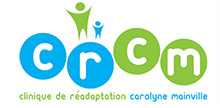Dyspraxia is a disorder in acquiring multistep motor tasks and planning multistep movements. Little is known about dyspraxia, which is difficult to diagnose and causes significant difficulties for
school-age children.
Dyspraxia is often referred to as the “hidden handicap.” Indeed, the condition is difficult to diagnose and dyspraxic children are often considered lazy or clumsy.
Dyspraxia is a developmental disorder. Boys are 2 to 4 times more likely to be affected than girls, with a prevalence of 6% in children age 5 to 11 years (Pannetier, 2007). Dyspraxia causes difficulties in acquiring skills involving multistep motor tasks, such as dressing, using scissors, riding a bike, and writing.
The word dyspraxia comes from praxis, which refers to the functions of coordinating and adjusting basic voluntary movements to accomplish a specific task. Consequently, a dyspraxic child has difficulty planning and coordinating movements for a specific purpose. Another words, the child doesn’t know “how to do it.”
Dyspraxic children must therefore use other strategies to learn new movements that normally are learned spontaneously. They have to make much more effort than children the same age to achieve less-than-optimal outcomes with movements that often lack coordination.
Dyspraxia affects overall child development and, unfortunately, is infrequently diagnosed at an early age. Starting school and difficulties at school often trigger investigation of the situation. A physician—often a neuropediatrician—makes the diagnosis, supported by occupational-therapy assessment and/or neuropsychological assessment.
It is important to recognize that dyspraxia is not a form of intellectual impairment, a behavioral disorder, or, even less, laziness or lack of interest. Although often associated with attention-deficit disorder and learning disorders, dyspraxia can occur without related conditions.
MargOT hopes to increase the awareness of parents and practitioners in the preschool and school sectors of the importance of early screening. Screening makes it possible to reeducate the child so that he or she can achieve a level of independence needed to function in every day life.
A dyspraxic children in day-today life:
At School:
· Slow in doing things
· Difficulty with using scissors
· Difficulty in learning to read and write
· Poor handwriting
· Difficulty in organizing his desk and tasks
· Difficulty with physical education
At Home:
· Awkward with utensils
· Slow to acquire independence
· Clumsy, falls, runs into things
· Unable to tie his shoes
With Others:
· Needs reassurance
· Social difficulties
· Poor understanding
Does your child have difficulties? Get in touch with us.
An occupational-therapy assessment could help you understand the situation. We can help with recommendations or
providing follow-up for your child, if appropriate



Leave A Comment